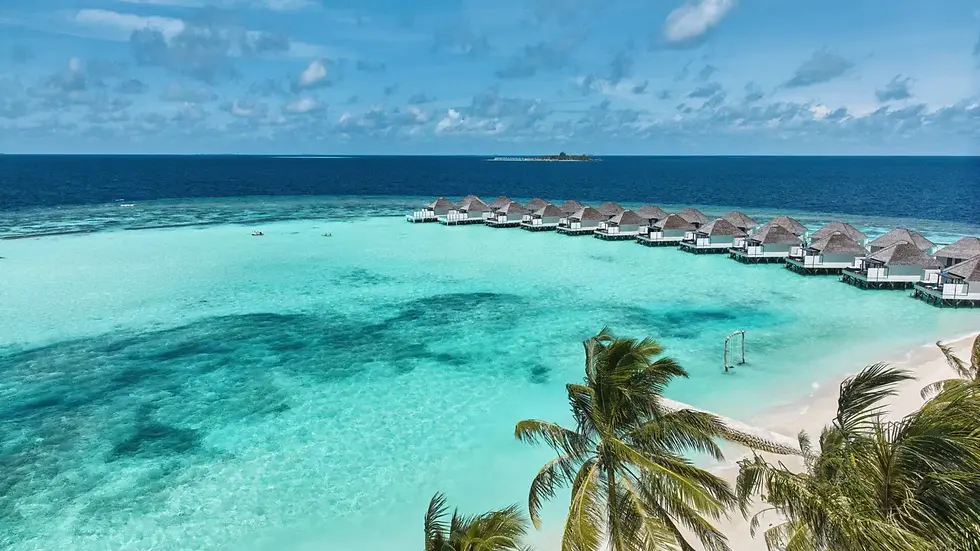Monsoon or No Monsoon? Finding the Best Time to Visit Ladakh
- SAURAV ANAND
- Mar 28
- 4 min read

Ladakh, often referred to as the "Land of High Passes," is a dream destination for travelers seeking adventure, natural beauty, and cultural experiences. However, choosing the best time to visit this mesmerizing Himalayan region is crucial to ensure a seamless and enjoyable trip. One of the most common dilemmas travelers face is whether to visit during the monsoon season or avoid it altogether. In this guide, we’ll break down the seasonal variations and help you determine the best time for your Leh Ladakh adventure.
Understanding Ladakh’s Climate
Unlike most parts of India, Ladakh falls in a rain shadow area, meaning it receives very little rainfall even during the monsoon season. However, the journey to Ladakh, especially via road routes like Manali-Leh and Srinagar-Leh, can be affected by rain-induced landslides. The climate in Ladakh varies drastically across seasons, so planning your trip at the right time is essential.
Summer (May to September): The Peak Tourist Season
Summer is the most popular season for visiting Ladakh. From May to September, the roads leading to Ladakh remain open, and the weather is pleasant, with temperatures ranging between 10°C and 25°C. This period is perfect for sightseeing, trekking, and indulging in adventure activities like river rafting and mountain biking.
If you’re planning to explore the region extensively, opt for Leh Ladakh tour packages that include visits to iconic attractions like Pangong Lake, Nubra Valley, Magnetic Hill, and Tso Moriri. The clear skies and comfortable temperatures make summer the ideal time for photographers and nature enthusiasts.
Monsoon Season (July to August): To Visit or Not?
The monsoon season in Ladakh is different from the rest of India. While Ladakh itself does not experience heavy rainfall, the routes leading to it, particularly via Himachal Pradesh and Kashmir, might face occasional landslides and roadblocks. However, if you are an adventurous traveler, visiting Ladakh during the monsoon season can offer unique experiences.
One major advantage of visiting Ladakh in monsoon is the reduced tourist crowd. Popular attractions remain less crowded, allowing for a more peaceful experience. Moreover, the landscape becomes even more breathtaking, with lush greenery in lower altitude areas contrasting against Ladakh’s stark, barren beauty.
For those who love road trips, Leh Ladakh bike tour packages offer an exhilarating experience. However, ensure you’re well-prepared for unexpected weather changes and have backup plans in case of road closures.
Autumn (September to October): A Hidden Gem
Autumn is one of the most underrated yet spectacular seasons to visit Ladakh. By September, the monsoon subsides, leaving behind clear blue skies and stunning landscapes with golden hues. The temperatures start dropping, ranging between 5°C and 20°C, but the weather remains comfortable for outdoor activities.
This is also the time when Ladakh hosts some vibrant festivals, such as the Ladakh Festival, which showcases the region’s rich cultural heritage. If you want to explore Ladakh without the summer tourist rush, autumn is an excellent time to visit.
Winter (November to March): The Snowy Wonderland
If you’re a fan of snow-covered landscapes and extreme adventure, winter in Ladakh is an experience of a lifetime. With temperatures plunging as low as -30°C, only the most daring travelers choose to visit during this season. The famous Chadar Trek, where trekkers walk over the frozen Zanskar River, is a major highlight of Ladakh’s winter.
However, winter travel requires thorough preparation, as most high-altitude passes and lakes become inaccessible due to heavy snowfall. Many standard Leh Ladakh packages do not operate during this time, so travelers must opt for specialized winter expeditions.
Choosing the Best Time Based on Your Travel Style
For Sightseeing & Cultural Exploration: May to September is the best time. The roads are accessible, and the weather is pleasant. Ideal for first-time visitors.
For Adventure Enthusiasts: June to September is great for biking, trekking, and rafting. The roads are open, and adventure activities are in full swing.
For Budget Travelers: Monsoon (July-August) and autumn (September-October) offer relatively lower prices on accommodations and travel packages.
For Offbeat & Extreme Adventures: Winter (December to February) is perfect for those who want to experience Ladakh’s raw beauty in sub-zero conditions.
How to Plan Your Trip?
If you’re traveling from the eastern part of India, consider Leh Ladakh tour package from Kolkata to ensure a hassle-free experience. These packages typically include flights, accommodation, sightseeing, and guided tours, making travel more convenient. You can also opt for customized itineraries based on your interests, whether it’s a family trip, a biking adventure, or a cultural exploration.
Final Thoughts
So, monsoon or no monsoon? The answer depends on your travel preferences. If you prefer clear skies, accessible roads, and vibrant festivals, summer is your best bet. If you seek solitude, adventure, and offbeat experiences, the monsoon or autumn seasons offer a unique charm. And if you’re up for an extreme winter adventure, Ladakh will not disappoint even in the coldest months.
Regardless of when you visit, Ladakh promises an unforgettable journey filled with awe-inspiring landscapes, thrilling adventures, and cultural richness. Choose the right season that aligns with your travel goals, and embark on a once-in-a-lifetime experience in this Himalayan paradise.



Comments